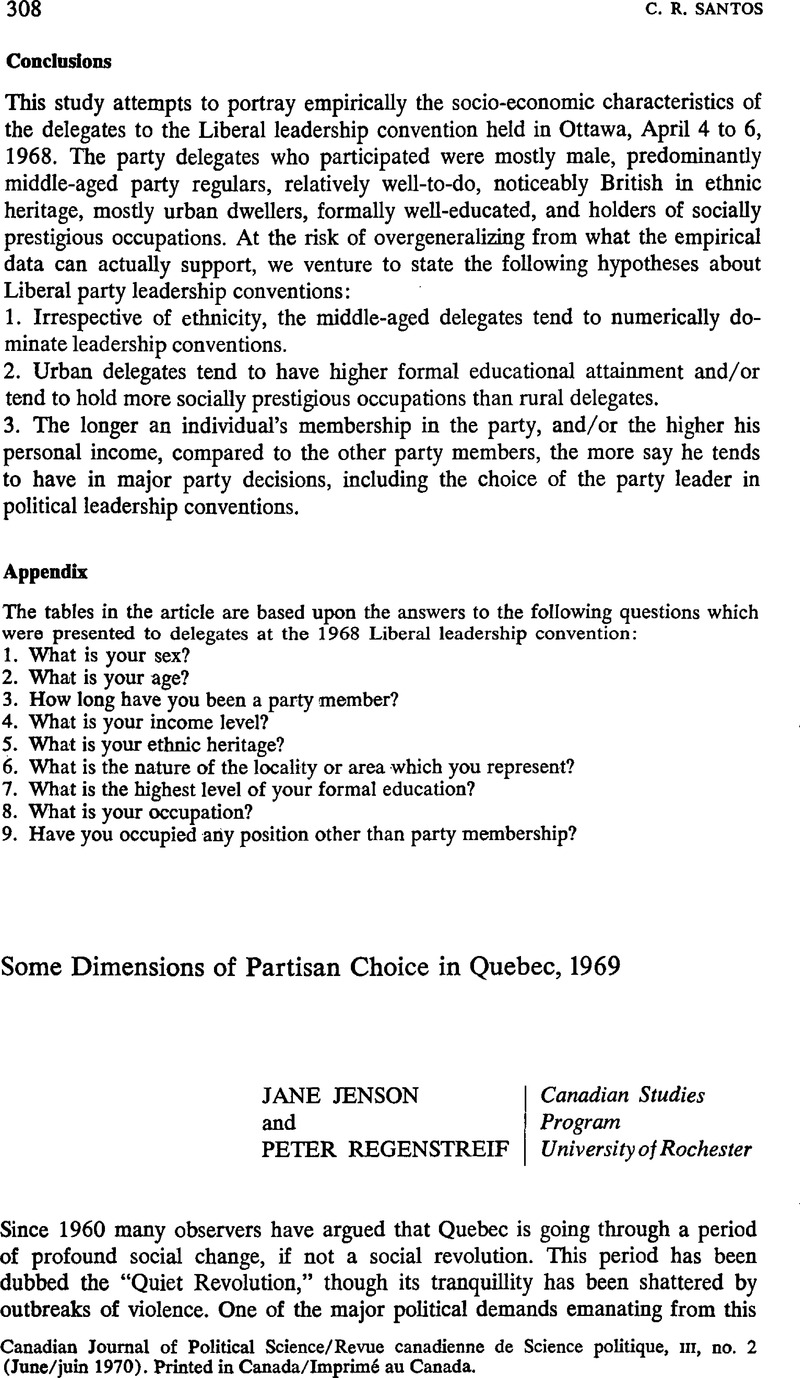Published online by Cambridge University Press: 10 November 2009

1 The data in this paper are the result of a telephone survey of a multi-stage area probability sample of 428 French-speaking voters across the province of Quebec. The study was conducted in March 1969. The market research firm of Canadian Facts carried out the field work. Some of the results were reported in the Toronto Daily Star and syndicated nationally in April under the by-lines of Dominique Clift and Peter Regenstreif. The authors wish to thank the Star for releasing the data for this more complete and systematic analysis. It is worth noting here that 94.6 per cent of the Quebec population has telephone service.
2 The Rise of a Third Party (Englewood Cliffs, nj, forthcoming).
3 Commenting on cbc radio.
4 “The Social Evolution of Quebec Reconsidered,” Canadian Journal of Economics and Political Science, XXVI, no. 4 (Nov. 1960), 533–51.
5 Voting (Chicago, 1954).
6 Campbell, A.et al., The American Voter (New York, 1960), 65.Google Scholar
7 See Zavoina, W. and McKelvey, R., “A Statistical Model for the Analysis of Legislative Voting Behavior,” paper delivered at the 1969 Annual Meeting of the American Political Science Association, New York, Sept. 4, 1969.Google Scholar
Using the multiple response probit method developed in this paper, the model is: P[Rk] = ø (Y − μk−1) − ø (Y − μk), for each k, where Y = βo + β1X 1 + … + βnXn P[Rk] is the probability of the k th response, Rk, ø(x) is the standard normal cumulative density function evaluated at x, and the β1's and μi's are parameters estimated by maximum likeli-hood procedures.
The authors would like to thank Richard McKelvey for his assistance with some of the statistics in this paper while absolving him of all responsibility for the analysis.
8 Brinton's, CraneThe Anatomy of Revolution (New York, 1957)Google Scholar is the classic work on the subject; see especially 52–66, 100–10.